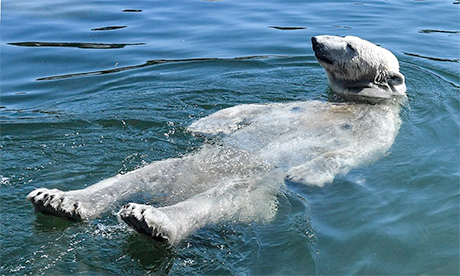Water vapour is an important greenhouse gas and the atmosphere contains a lot more of it than it does carbon dioxide.
Despite this, the role of water vapour in climate change is often misunderstood.
Water vapour is thought to drive two to three times as much warming of the earth via the greenhouse effect as carbon dioxide causes.
So, when we talk about reducing greenhouse gas emissions to slow climate change, why is carbon dioxide considered so much more important?
To answer this question, we first need to understand that the amount of water vapour held by the atmosphere is directly determined by the temperature of the atmosphere – and so varies greatly across the earth.
At the poles where the air is cold, it is also very dry, with water vapour only around 0.01 per cent of the atmosphere.
The cold air means that water vapour is more likely to change from a gas to a liquid or solid (think steam condensing into rain or freezing into snow) nearer the poles.
In the tropics where the air is warmer, the amount of water vapour can be much higher – up to 5 per cent of the air.
This humidity might be familiar if you’ve ever stepped out of an air-conditioned building into the open air in a tropical country such as Singapore.
When we emit greenhouse gases such as carbon dioxide into the atmosphere, the greenhouse effect is increased and temperatures go up.
Unfortunately, this unleashes a bigger problem with water vapour. Because warmer air can hold more moisture, this allows more evaporation from the oceans.
And in turn, more water vapour in the air means that the greenhouse effect in the atmosphere is stronger, causing more heat to be trapped at the surface of the Earth and temperatures to respond by rising even more.
This is known as a positive feedback cycle.
Can we already see increased water vapour in the atmosphere?
For many years scientists have used instruments attached to balloons to directly measure the amount of moisture in the atmosphere.
They also use signals from satellites to indirectly measure atmospheric humidity.
Taken together, these techniques clearly show that the amount of water vapour in the atmosphere has already increased.
Water vapour is thought to drive two to three times as much warming of the earth via the greenhouse effect as carbon dioxide causes.
The Intergovernmental Panel on Climate Change (IPCC) is the world body tasked with assessing climate change.
Their most recent report described a global increase in water vapour in the troposphere (the lowest layer of the Earth’s atmosphere) of about 3.5 per cent in the past 40 years.
This is consistent with the increase we expect from the 0.5 degrees Celsius increase in global average temperature we’ve seen in the same timeframe.
How strong is the feedback effect of water vapour on warming?
For each degree of warming due to carbon dioxide, the feedback effect from water vapour causes an extra 1 to 2C of warming.
There are changes in clouds that also occur, but these do not offset that warming.
And indeed, the IPCC notes that if all greenhouse gases other than water vapour were removed from the atmosphere, the resulting temperature drop and accompanying reduction in water vapour would lead to a “runaway drop of the greenhouse effect that would plunge the Earth into a frozen state”.
The IPCC, therefore, concludes that while carbon dioxide is the main controller of climate, water vapour is a “strong and fast feedback”. Continue reading
- Sam Dean is a principal scientist for climate at NIWA.
News category: Analysis and Comment.




